[A version of this article was also posted at GreenBuildingAdvisor.com].
My apologies to anyone who is expecting a post about the influential modernist design/build movement that flourished in 1920’s Germany. The Bauhaus of this post’s title is a home center along the lines of Home Depot and Lowe’s in America.
I haven’t actually found any hardware stores in Berlin — something akin to Aubuchon in New Hampshire, or the mom-and-pop hardware stores that may still exist in some small towns in America. The biggest home improvement store chain in Germany is called OBI, which is the third largest such company in the world, after Home Depot and Lowe’s. I have heard that there is an OBI up in the Mitte section of Berlin, but Bauhaus is the home improvement store that I have seen while biking around town. In fact, a large new branch of this Swiss-based retailer is being constructed not far from our apartment. DIY is apparently alive and well in Berlin.
A couple of weeks ago, I had occasion to pick up a few items at Bauhaus. Since I was not in a rush, I decided to tour the store with my camera, taking photos of things that seemed notable, particularly as compared with the product selection at home improvement stores in the US.
The rest of this post contains lots of photos interspersed with brief notes. If visiting the Home Depot doesn’t give you the shivers, you might find something of interest herein.
This billboard greeted me in the parking lot:
I dig a woman who hangs her own sheetrock.
Bauhaus gets points for the adaptive re-use of a pre-war industrial building. The original arched-top doors are displayed on the front facade.
Inside, riveted steel beams and trusses are still helping to hold up the roof.
This particular store rivals its American cousins in size.
This judgment is based not on square footage, but on how tired I was after walking through it for an hour.
The obligatory displays of compressors and snow blowers at the entrance, although much smaller in scale than one would find in say, Keene, NH:
Self-contained vertical wood splitters. Who is using these in the city?
Come to think of it, who is gearing up for boating in late November in Berlin?
We are hoping for snow in the city. Apparently there’s one hill in Berlin where everyone goes sledding. It’s the Teufelsberg, or “Devil’s Mountain,” not far from us in the Grunewald park.
I know from experience that the cute curvy sleds require just the right snow conditions.
Gas grills are nearly as ubiquitous as televisions in the US, but only recently have they begun to catch on in Germany. My brother-in-law Stefan proudly showed me his new gas grill when we first visited him this summer. I wasn’t sure what the big deal was, until I realized that nobody else I knew in Germany had one. Annette thinks we should get a small gas grill for the terrace of our apartment, but I need to look into how one obtains propane. It’s not like we can just go to our local gas station or hardware store to replace a tank or have one filled.
The power tool displays look familiar, although dominated by German brands (Metabo, Bosch, AEG), and with a particular emphasis on hammer drills:
Waterproofing. All buildings, everywhere, even the masonry buildings in Germany, have issues with moisture. The store has a large area devoted to water management products. This dimpled plastic drainage mat is similar to the one I installed under the new slab in our basement, just before we moved to Germany.
No US-style concrete blocks (CMU’s) here, but lightweight aerated concrete blocks are readily available:
The insulation aisles include one dedicated to ridgid EPS foam blocks, and another to the accessories and stucco products necessary to finish them. I have seen weekend warriors installing foam and stucco on the exteriors of their masonry houses.
No wood clapboards or shingles. No fiber cement siding.
A couple of aisles in the insulation area displayed mineral wool batts and, to my surprise, fiberglass batts.
Nice displays with information and materials for air sealing:
These “Fermacell” sheets are sandwiches of EPS foam filler between two slices of a hard, Homasote-like board. What are they used for? Climbing walls, apparently, and Sumo wrestling mats.
These boards are also used on top of concrete floors, as an underlayment for finished flooring. The structural floors of most homes I have seen are cast concrete — strong, but not particularly insulating or comfortable. These boards are overlaid on the concrete to form a subfloor. Annette tells me that German building codes have requirements for sound attenuation between floors. In addition to enhancing insulation and comfort, these “Estrich” subfloor systems play an important role in minimizing sound transmission.
A variation on this theme includes what I believe are EPS pellets, or something like them (think bean-bag chair filler). Sold in large bags, these pellets are dumped onto the structural concrete floor of new construction or a renovation, screeded flat, and then overlaid with a layer of interlocking estrich subflooring.
The store had an aisle for sheetrock, but I didn’t see any cement-based tile backer board; just these lightweight foam, fiberglass-mesh-reinforced panels as a substrate for tile. I know that such boards are making in-roads in the US, but most tilers I know still use cement backer-board. The fiberglass-reinforced panels probably work great, but I am afraid that they are too light weight to inspire confidence.
The tile section of the store was what I might have expected, although substantially larger that I have seen in American home centers. When setting tiles on a masonry base, I have occasionally thought it would be useful to have a masonry-reinforcing product that is something between expanded metal lath, and the 6×6 welded wire mesh that is typically used in concrete slabs. Like this product, with a grid that is roughly 2 ½” x 2 ½”:
Wide masonry walls necessitate not only wide window sills on the outside, but also potentially wide interior sills or stool caps. These pre-fabricated stone sills are available in marble and granite:
Metal stud wall systems, as one would expect in an urban home center:
The dimensioned lumber was all metric, of course. The framing lumber tended toward squarer cross sections, rather than the rectangular 2×6’s and 2×10’s that we build with in the US. Not sure why. Most of the lumber I have seen being used in and around Berlin is for roof framing.
Chunks of dried beech wood (“Massivholzelemente”) are being sold as small tables:
and as a furniture system:
Not as elegant as the Hundegger-cut timber beds on which some Bensonwood associates take their rest, but then again, not everyone has access to a Hundegger.
Here’s a similar do-it-yourself system, based on glulam material (“Leimbaender”):
The area devoted to windows was not large, but the stock windows I saw were impressive. I have not seen any double-hung windows in Germany; they are all tilt-and-turn. These windows are great to use, once you figure out how the hardware works. And they seal very tightly.
I am a fan of high quality weatherstripping:
All of the interior doors I have seen in Germany have had rabetted edges. Solid wood doors are rare. Door hardware tends to be robust. I haven’t seen any round knobs; just levers.
Like the tile area, the section devoted to flooring was quite large. However, there wasn’t any solid-sawn wood flooring. All of the flooring was some version of laminate or engineered wood flooring — “floating floor” systems.
In the US, I have seen two or three possible underlayments for floating floors: a flimsy closed-cell foam, a rubber mat, maybe rolls of thin cork. The displays in Bauhaus offer fourteen different types of underlayment — along with information to guide the selection.
I didn’t see any stone countertops on display, but there were lots of prefabricated counter sections with different types of laminate finish. I couldn’t figure out exactly why the store needed an edge-banding machine, but I was impressed that it was there.
Behind the edge-bander was an aisle with Leimholzplatten, panels made up of three cross-laminated layers of solid wood. They are available in a dozen different species, including bamboo, acacia and paulownia.
I am not sure why these panelized wood products are not more prevalent in the US. They are great for furniture and casework, and even for interior finishes. They are more durable than plywood, and easier to work with.
Getting tired yet? At this point in my tour, I was starting to slow down, but I was only about halfway through the store. I decided to skip the landscaping/gardening section.
Automatic awnings to shade your windows in summer, and to allow light in during the short winter days that are now upon us:
Stair systems. I don’t think these would meet code in the US. In fact, I noticed the same thing about the stairs in our apartment, which had been installed within the last ten years when the apartment was renovated.
I have admired the “special-forces”-inspired, reinforced-with-ballistic-nylon cargo pants that Handwerkers wear here in Germany. Now I know where to get me a pair.
I didn’t take any photos of the tool belt section, but there wasn’t much to look at. In the US, carpenters pride themselves on the size and configuration of their tool belts.
These tool cases appear to be more rugged
than the plastic Stanley cases just down the aisle:
Umm…hand miter saws, anyone? My grandfather owned one. I think the last one I saw was in an antique store in Swanzey, NH.
A wide variety of axes, mauls and hatchets:
Slings! I cherish and selfishly guard the collection of four specially-ordered picking slings that I have in the US. Turns out that if you have an upcoming crane project in Berlin and you need a few extra slings, you can just pedal over to Bauhaus:
Jeez, we haven’t yet gotten to plumbing or electrical. Time to dig deep and pick up the pace.
Because most of the walls are masonry, systems for fastening to masonry are highly evolved here:
These galvanized ground anchors and connectors are designed for outdoor projects like fences and trellises:
And compost bins:
Annette has never “gotten” the fin-tube baseboard radiators (convectors) that are so common in New England. They are hard to clean under and inside, the covers always come loose, and the fins get bent. Germans prefer these more solidly-built wall-mounted units:
When Annette and I built our timber frame home in Alstead, NH, we imported our bathroom’s hydronically heated towel-warmer from Germany in our checked baggage. It was damaged only slightly en route. If we were ever to need one in Berlin, the difficulty would not be in procuring it, but rather in deciding on the size and type:
Plumbing drain/waste/vent (DWV) systems in Germany are not glued together with PVC cement; the gasketed fittings are simply pressed together. Tedd Benson started promoting this system years ago as a potential building block of Open Building in the US.
Fittings for domestic water systems come in at least three flavors here: pressure-fit gasketed fittings (“Steckfitting”), compression fittings, and soldered fittings — with plastic and copper pipe to match.
Let’s skip electrical, lighting, paint and appliances, because this home center tour is going from exhaustive to exhausting. Just a couple of other areas to note.
Options for ventilation ductwork in the US are limited. We have flimsy flexible duct that is simple to install, but not durable or particularly safe, and we have rigid metal duct that can be a pain to work with. I like the thin-walled rigid plastic duct system that I saw in Bauhaus. The display suggested four different levels of “duty rating,” with spiral metal duct available for the most demanding applications.
Nice bathroom displays. Most modern toilet installations in Germany are wall-mounted, presumably for ease of cleaning under and around. The flush tank is hidden in the wall. Most activators are dual flush.
There was certainly more to show and tell at this store, but by this point I was ready to call it a day.
I had picked up three items on my journey through the store: a 14mm/15mm wrench for our bikes, a packet of shelf rest pins, and a utility knife.
Although tired, I was looking forward to biking back to our apartment. Before leaving, I grabbed a quick bite at the bistro located near the store’s exit. No fried egg sandwiches or Italian sausage grinders here. I treated myself to a delicious cheese sandwich on that dark, nutty whole grain German bread, and pedaled home through a gray drizzle.

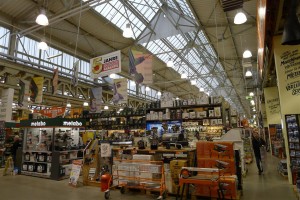
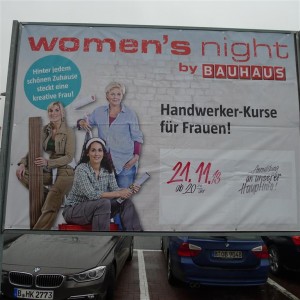

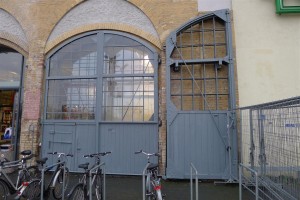
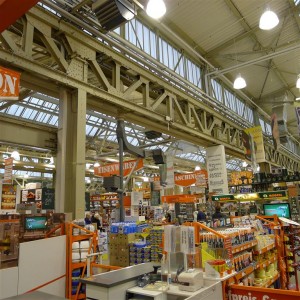
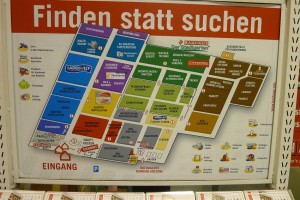
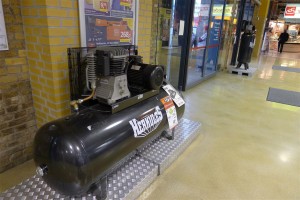
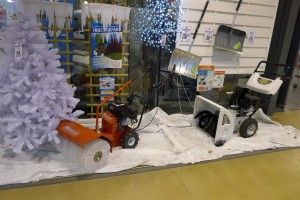
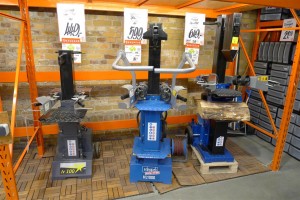
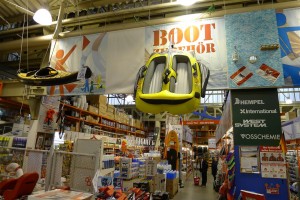
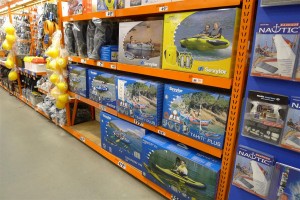
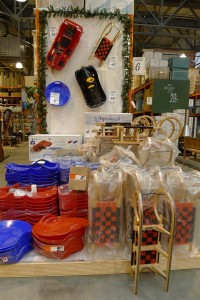
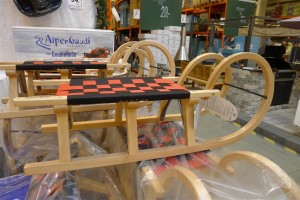
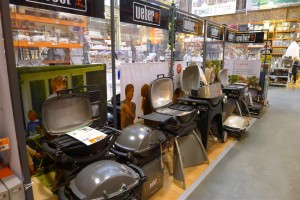
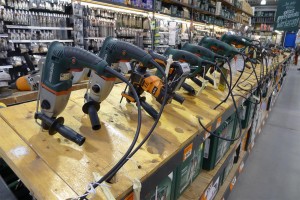
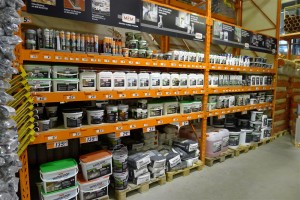
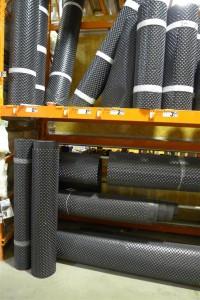
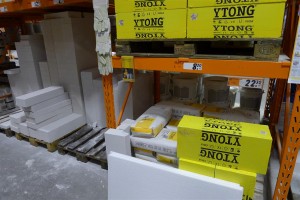
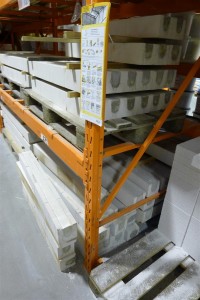
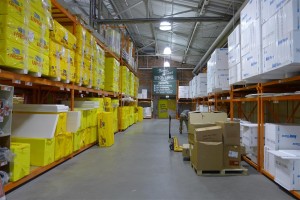
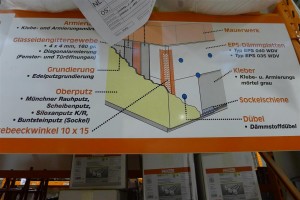
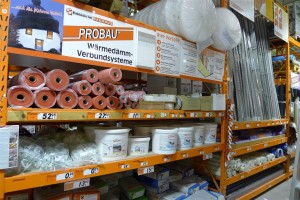
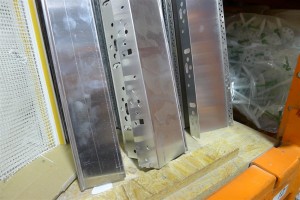
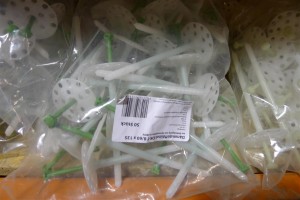
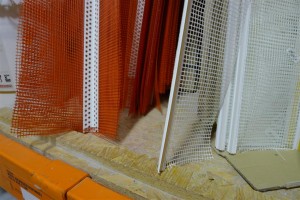
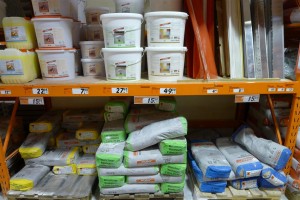
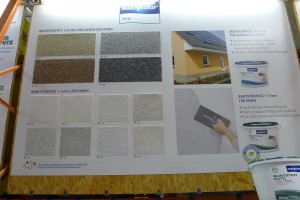
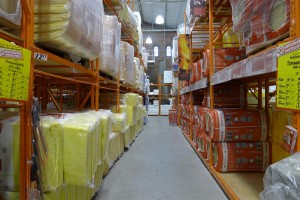

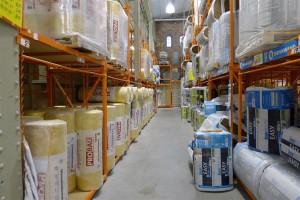
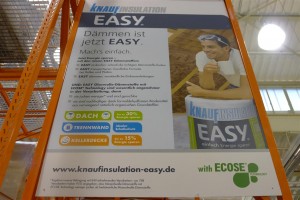
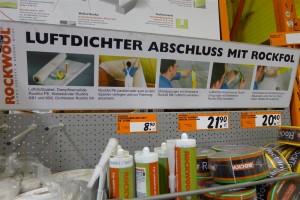

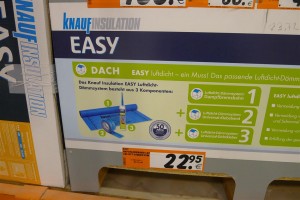
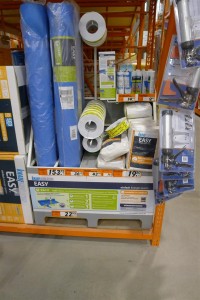
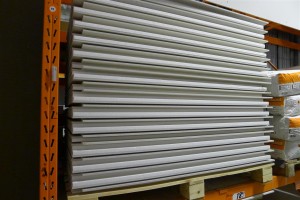
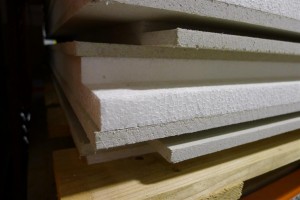
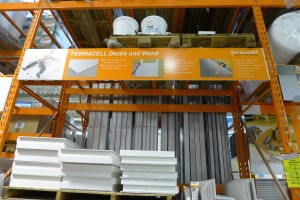
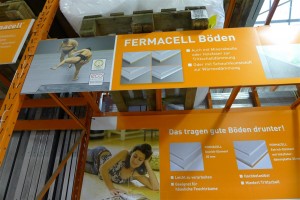
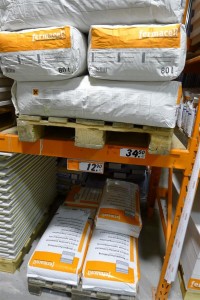

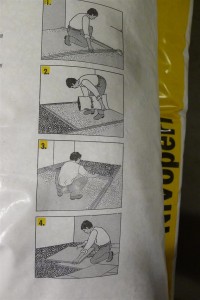
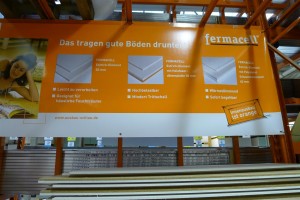
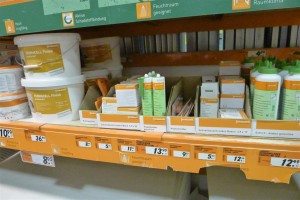
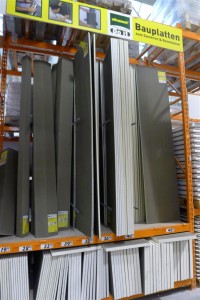
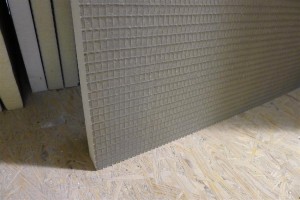
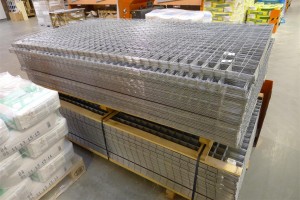
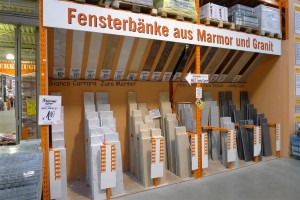
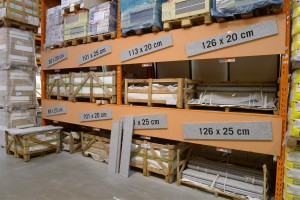
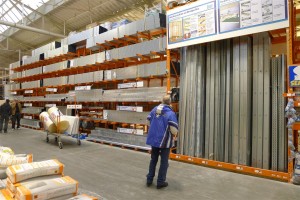
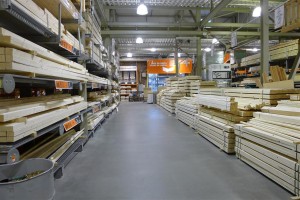
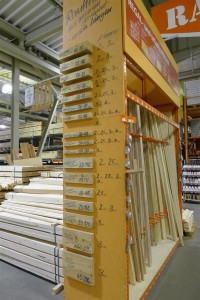
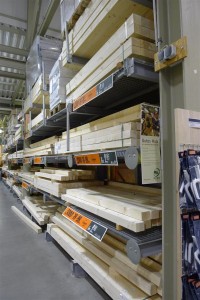
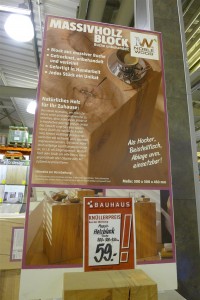
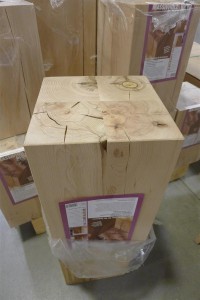
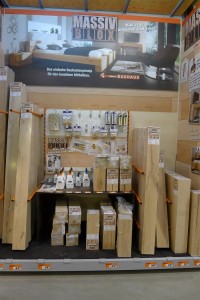
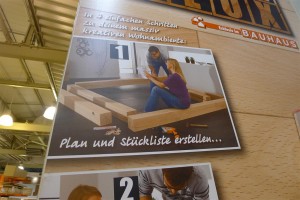
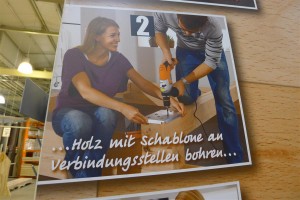
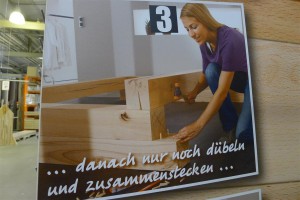
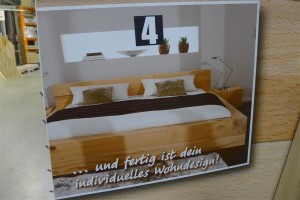
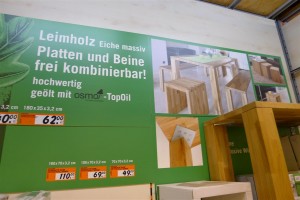
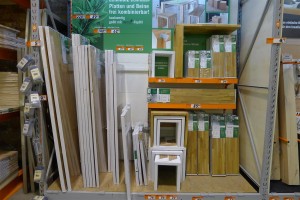
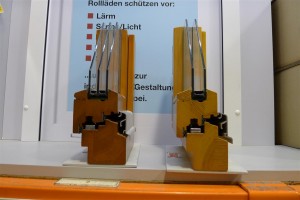
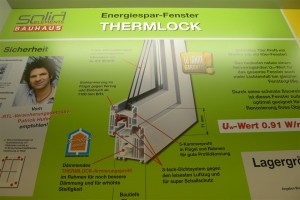
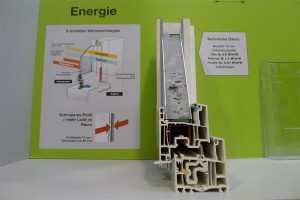
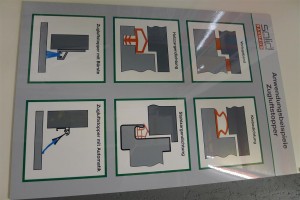
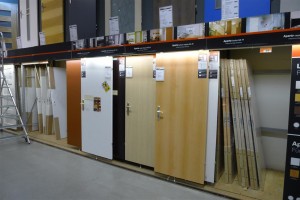
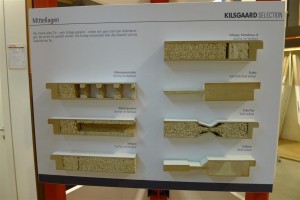
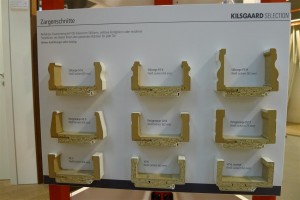
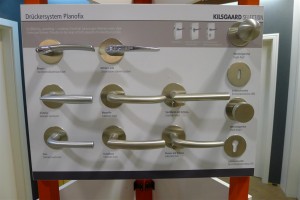

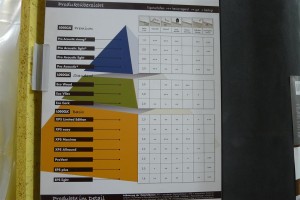
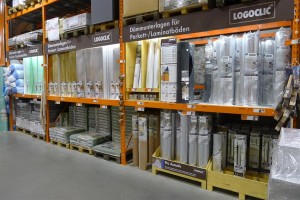
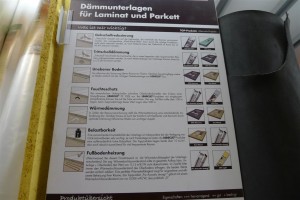
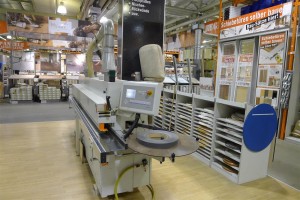

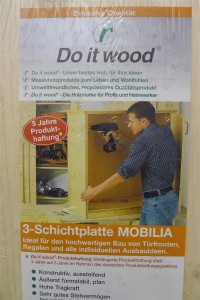
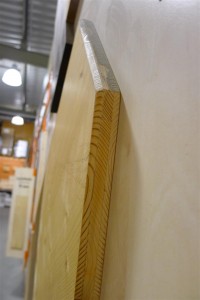
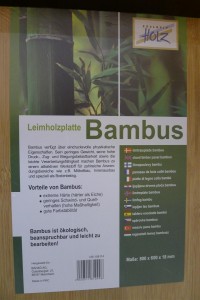
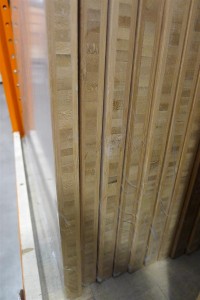
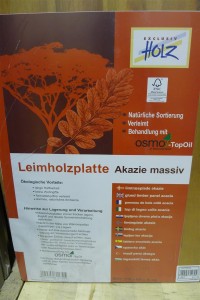

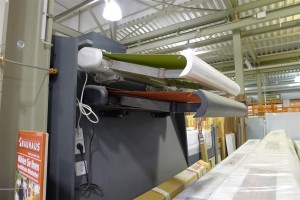
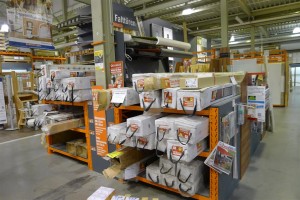
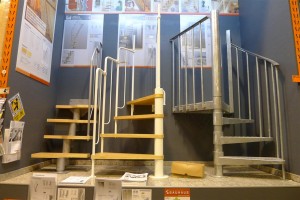
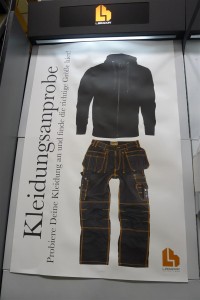
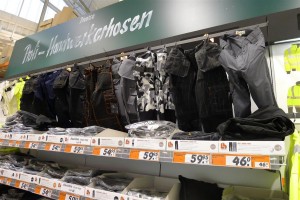
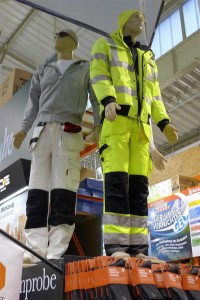
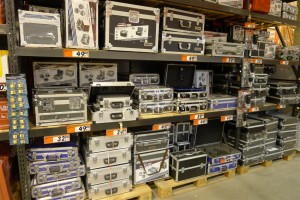
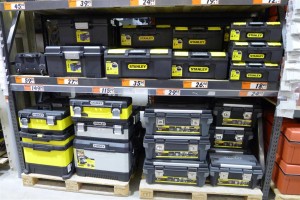

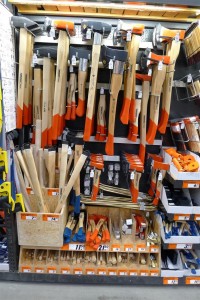
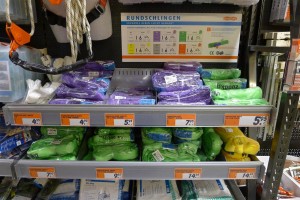
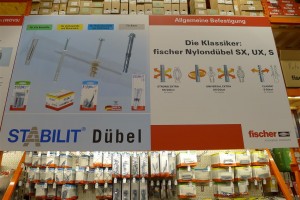
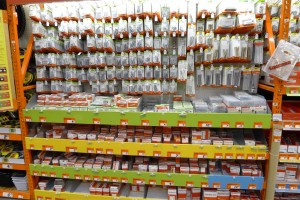
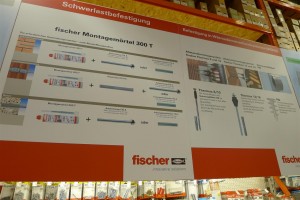
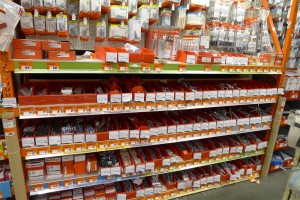
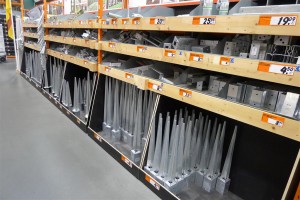
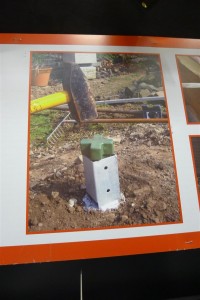
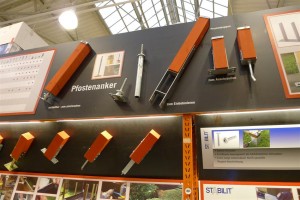
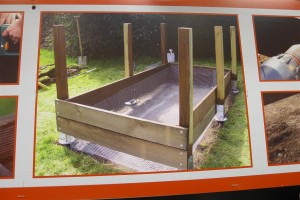

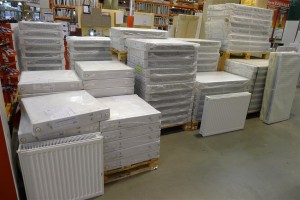
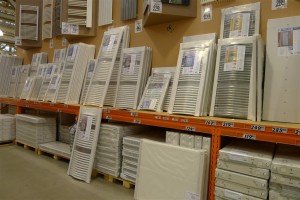
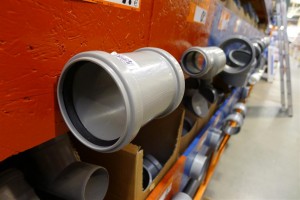
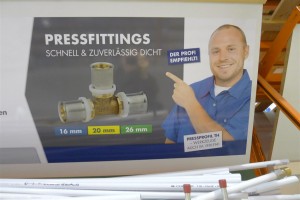
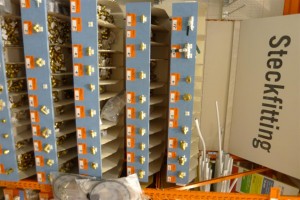

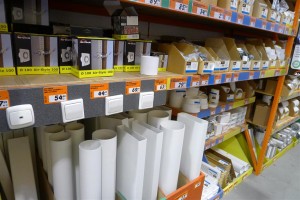
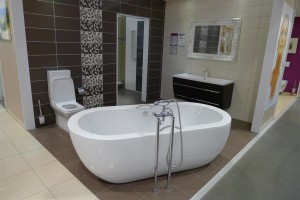
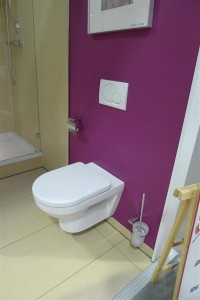
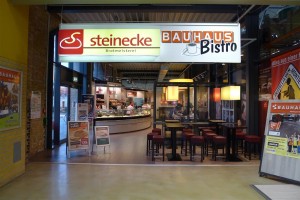
What a great tour for those of us who have wandered through the Keene Home Depot. I hope you will continue with tours of grocery stores, department stores, farmer’s markets, and pastry shops. Very light snow last night here in Walpole, with the sun shining through this morning.
Thx for the great tour. Seems to be enourmous. By the way, as far as I know Bauhaus is German and not based in Swizzerland but in Mannheim, Germany. I’d be looking forward to see a tour on the new store they build not far from your appartment, if you have a chance to go there…
Thanks for checking out the blog. Wikipedia seems to think that Bauhaus is a Swiss company, but they also mention that the first store was in Mannheim, so perhaps Bauhaus is headquartered in Germany. I have checked out the new store on Kurfürstendamm, and it’s quite impressive! I just wish I had “hands on” projects to work on here in Berlin, so I could justify buying some of those cool tools.
Thanks for the fascinating tour! I read the edited version of this on the Green Building Advisor today which lead me to your blog. I am introducing a wall construction system to the United States that I had felt would be well received in northern Europe… and you are confirming this notion for me. It has many high performance attributes that I can see from this tour would make sense to Germans.